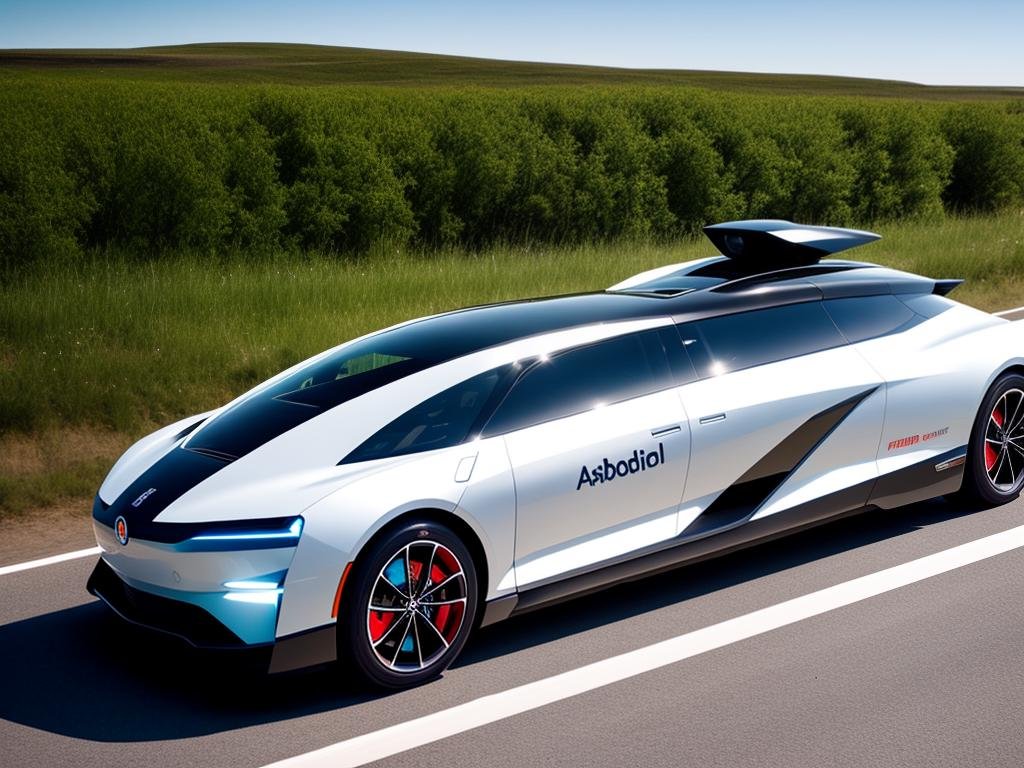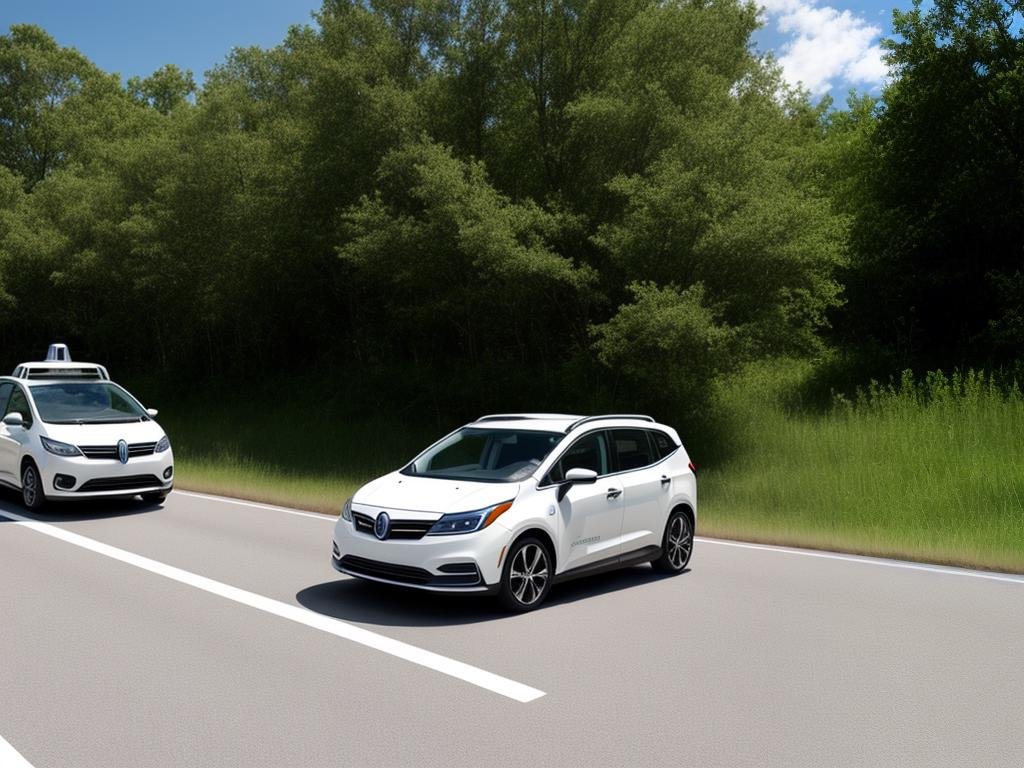Imagine a world where your vehicle navigates the bustling streets all by itself, dropping you off at your preferred location, and then finds itself a parking spot – all this while you sit back and relax or indulge in other activities. This utopian dream is steadily marching towards reality with the advent of Artificial Intelligence (AI) in autonomous vehicles. Our journey into this exciting domain begins by comprehending the basics of autonomous vehicles and the indispensable role of AI. As we delve deeper, we will explore how AI enables these self-driven machines to perceive their surroundings, make decisions, and ultimately maneuver themselves, providing us with a plethora of benefits and also posing some significant challenges. Finally, a glimpse into the future will disclose how AI is all set to revolutionize the realm of transportation.
Understanding AI and Autonomous Vehicles
Understanding Autonomous Vehicles
Autonomous or self-driving vehicles are a significant innovation in the automobile industry, powered by Artificial Intelligence (AI). These vehicles are designed to sense their environment and operate without human intervention and control. They are equipped with sensors, radars, cameras, and AI algorithms to detect surroundings, identify obstacles, and make decisions. The sophisticated software processes all the information received from these pieces of technology to command the vehicle to behave in a certain way.
Types and Levels of Autonomous Vehicles
Autonomous vehicles can be of various types like cars, trucks, buses, and even drones. Depending on their degree of autonomy or human intervention required, these vehicles are categorized into different levels, from 0 to 5.
- Level 0 represents no automation where human drivers are completely in control.
- Level 1 is driver assistance level, where the system can either take control of the steering or acceleration/deceleration under specific cases.
- Level 2, also known as partial automation, can control both steering and acceleration but needs human monitoring.
- Level 3, or conditional autonomy, can perform all driving functions under certain circumstances but needs a human driver to take control when asked.
- Level 4 implies high automation where the system handles all driving tasks even if a driver doesn’t respond to a request to take control.
- Lastly, Level 5 is the stage of full automation, where no human intervention is required at any point during the vehicle operation.
Role of AI in Autonomous Vehicles
Artificial Intelligence plays a pivotal role in making autonomous vehicles a reality. It forms the core of these machines, enabling them to perceive, interpret, plan, and decide without human supervision.
For sensing the environment, AI uses a suite of sensors to collect data. This includes RADAR for measuring distance, LIDAR for creating 3D maps, and cameras for visual recognition. These collected data are then processed and analyzed by AI algorithms, applying techniques like machine learning and computer vision. This process helps the vehicle identify objects, classify them, predict their behavior, and make decisions accordingly.
In planning and decision-making, AI determines the most suitable path for the vehicle, taking into account the traffic laws and rules. Furthermore, AI obstacle avoidance algorithms help to detect and circumvent possible obstructions, ensuring the vehicle’s safe movement.
Understanding AI in Autonomous Vehicles
Grasping the concept of AI in autonomous vehicles equates to visualizing how our vehicles and other means of transportation could operate independently in the not-so-distant future. It’s an intriguing blend of machinery and everyday routine, poised to drastically affect the way we navigate. Each stage and level of the technology in these vehicles is diverse, with AI functioning as the critical key in all aspects. From analysing sensor data to anticipating behaviors and making necessary decisions, the essential role of AI in autonomous vehicles is irrefutable. The horizon looks promising for autonomous vehicles, with AI steering us towards a future commute that’s safer, more streamlined, and significantly more convenient.

Working Mechanism of AI in Autonomous Vehicles
The Role of AI in the Functioning of Autonomous Vehicles
Artificial Intelligence (AI) forms the backbone of autonomous vehicles, granting them the capability to perceive their surroundings, identify objects, make informed decisions based on data, and operate safely within traffic conditions. The functioning of AI in such vehicles involves a sophisticated procedure that encompasses various sensors, cameras, radar, and Light Detection and Ranging (LiDAR) components.
Understanding the Environment through Sensors
Most autonomous vehicles are equipped with a range of sensors that collect data about the vehicle’s surroundings. These sensors include ultrasonic sensors, which can detect objects at close range, and radar sensors that measure the distance and speed of objects further away. The sensors generate raw data on the proximity, dimension, and movements of surrounding objects.
Infrared sensors are also used to detect heat signatures from living beings and other vehicles, making it especially useful in low visibility conditions. In addition to these, the autonomous vehicles also use cameras that provide a visual perception of the environment to the AI system.
Perception Enhancement through LiDAR and Radars
LiDAR and radars play a crucial role in the process of understanding the environment. LiDAR systems utilize light in the form of a pulsed laser to measure variable distances to the Earth. The pulsed light rays bounce off objects and return to the sensor permitting the AI system to generate detailed, three-dimensional information about the surrounding environment.
Radar technology is equally essential. It uses the principle of radio waves reflection to determine an object’s distance and relative speed. In conjunction, these technologies provide a comprehensive, real-time understanding of an autonomous vehicle’s surroundings.
Object Recognition and Decision Making in Autonomous Vehicles
Once the environment has been perceived, object recognition comes into play. The AI has to accurately identify other vehicles, pedestrians, traffic signs, road markings, and obstacles. This process uses advanced machine learning algorithms that have been trained on vast amounts of data to recognize these various elements accurately.
After recognizing objects, the AI must then decide the safest course of action based on its understanding of the environment. It uses complex algorithms to predict the likely actions of other road users and maps out the optimal driving path while adhering to local traffic rules and norms. AI also takes into account real-time changes in traffic conditions and adjusts the vehicle’s maneuvers accordingly.
The Role of Machine Learning and Deep Learning
Machine learning and deep learning play a vital role in teaching an AI system to interact with its environment. These algorithms ‘learn’ from real-world experiences and data patterns, improving their performance and decision making over time.
For instance, autonomous vehicles use machine learning to learn about traffic rules and patterns. They are taught how various traffic signs look and what they mean. They ‘learn’ to recognize pedestrian crossings, understand traffic light sequences, and even interpret the actions and signals of other road users.
The machine learning algorithms continuously improve the accuracy of their predictions and decisions, enhancing the safety and efficiency of autonomous vehicles.
The Marvel of AI in Autonomous Vehicles
The realm of artificial intelligence (AI) in autonomous vehicles is a captivating blend of technology, which includes sensors, LiDAR, cameras, and machine learning algorithms. These diverse elements collaborate harmoniously to deliver an efficient, safe, and increasingly autonomous driving experience. With new developments emerging continuously, it’s clear that this field holds an abundance of potential for transforming the future of transportation.

Benefits and Challenges of AI in Autonomous Driving
Diving Deeper into AI’s Role in Autonomous Driving
At its core, AI in autonomous vehicles (AVs) is essentially the main nerve center enabling these cars to operate autonomously. These advanced AI systems tap into a broad spectrum of sensors and algorithms, which empower the vehicle with the capabilities to interpret its surroundings, make informed decisions, chart a driving course, and instantiate commands – all without human interference.
Benefits of AI in Autonomous Driving
One of the main advantages of AI in autonomous vehicles is enhanced road safety. These vehicles can operate without human intervention, thereby minimizing the risks associated with human error like fatigue, distraction, and inebriation. AI algorithms can detect obstacles, predict other road users’ actions, and react in real-time to avoid collisions.
Efficiency is another benefit. By optimal route planning, reducing traffic congestion, and coordinating with other AVs, these vehicles can reduce travel time and fuel consumption. AI also allows mobility-on-demand services, presenting a more efficient alternative to private vehicle ownership.
The convenience offered by AI-driven autonomous vehicles can be transformative, especially for those who can’t drive due to age, disability, or other reasons. These vehicles allow users to engage in other activities during travel, hence saving time and reducing stress.
Challenges of AI in Autonomous Driving
Despite these benefits, there are significant challenges with AI in autonomous vehicles. Data security is one key concern. Autonomous vehicles rely on massive data exchanges with cloud servers, road infrastructure, and other vehicles. These interactions can be vulnerable to hacking, which can compromise the vehicle’s operation and passenger safety.
The privacy of users is another concern. AVs collect detailed information about their users’ travel habits, which can be misused if it falls into the wrong hands.
The ethical dilemmas posed by AI in self-driving cars are profound. For instance, in a no-win situation where a collision is unavoidable, the AI must make a decision that could result in harm or death. Currently, there are no universal guidelines on how AI should react in such scenarios.
Achieving full autonomy remains an uphill task. Despite impressive advancements, the AI in self-driving cars struggles to operate effectively in complex and unpredictable human environments. For instance, handling inclement weather, interpreting unclear road markings, and understanding non-verbal cues from pedestrians are some of the challenges that AI systems currently face.
The Exciting Future of AI in Autonomous Vehicles
Technology innovators undertaking autonomous vehicle projects fully grasp the inherent challenges and are diligently crafting solutions. Measures are in the works to bolster data privacy and security, such as data encryption and anonymization. In parallel, there are collaborative strategies being implemented to create ethical guidelines pertinent to autonomous vehicles.
Significant improvements in the training of these vehicles and progression in AI technologies, including reinforcement learning and deep learning, offer potential paths to full autonomy. These AI systems are designed to learn from every experience, making them safer and more effective over time.
To wrap up, although AI in autonomous vehicles presents engaging opportunities to enhance safety, streamline operations, and create convenience, it is not without considerable challenges. Yet, the rapid pace of technological improvements and collective efforts among industry stakeholders promise to address these effectively.

Future of AI in Autonomous Vehicles
Diving Deep into V2X Communication in Autonomous Vehicles
A noteworthy stride in AI for autonomous vehicles is the advent of V2X communication – an abbreviation for vehicle-to-everything communication. This revolutionary technology enables vehicles to communicate not only amongst themselves but also with traffic infrastructure, like stoplights and road signs, and personal devices of pedestrians. The integration of AI into V2X communication allows for real-time analysis of information on traffic flow, weather conditions, and other changing elements that affect road safety.
Tapping into the potential of V2X communication requires robust, low-latency communication networks, specifically 5G. The value proposition of V2X includes the ability to mitigate accidents by delivering timely alert, enhancing traffic flow efficiency, and steering the course towards complete automation in the future.
Smart City Integration and AI in Autonomous Vehicles
Another future trend is the integration of AI in autonomous vehicles with smart city infrastructure. As urban areas continue to grow and develop, smart city solutions are being designed to manage city operations and services more efficiently. One of the key features of smart cities is Intelligent Transport Systems, which make transport safer, more efficient and eco-friendly.
AI in autonomous vehicles will play a crucial role in these systems. For instance, real-time data from autonomous vehicles can be leveraged to optimize traffic light timings, detect potholes, and even plan smarter urban layouts.
Examining the Regulatory Landscape
The incorporation of AI in transportation introduces new regulatory challenges. As this technology continues to evolve, administrations worldwide are wrestling with developing regulations to ensure safety and accountability. For example, who is at fault in an automated vehicle crash—the AI developer, the vehicle owner, or someone else?
Moreover, cyber security is a major concern. The more vehicles rely on AI and data communication, the more they become potential targets for cyber-attacks. Thus, security regulations for AI-based autonomous vehicles will also be a priority in the coming years.
The Role of AI in Shaping Future Transportation
AI is undeniably playing a significant role in shaping future transportation systems. Autonomous vehicles powered by AI can revolutionize mobility, making it safer and more reliable. For example, by using predictive analytics, AI can anticipate potential hazards and take proactive actions, which can significantly reduce traffic accidents.
Also, AI-powered autonomous vehicles can lead to more efficient traffic flow, reducing commuting time and contributing to a lower carbon footprint.
Most importantly, AI in autonomous vehicles has the potential to transform the transportation experience, especially for those unable to drive, such as the elderly and people with disabilities. Self-driving cars could provide them with greater mobility and independence, increasing their quality of life.
Overall, the future of AI in autonomous vehicles looks promising, provided that the inherent challenges can be addressed effectively. Its successful implementation could potentially redefine urban mobility, bringing convenience, efficiency, and increased safety to our daily commutes.

The integration of AI into the world of autonomous vehicles is a game-changer, opening the floodgates to countless possibilities and advancements that were once unimaginable. From improving safety and efficiency to confronting formidable challenges and ethical dilemmas, the use of AI in autonomous driving charts a new course in our transportation narrative. The road towards full autonomy is still strewn with hurdles and uncertainties, but the future is optimistic. It harbors a vision of cities integrated with Vehicle-to-Everything (V2X) communication and policies commensurate with the evolving technology. As we embark upon this intriguing journey, a deeper understanding of this technology will empower us to harness its maximum potential and will lead us towards an exciting era of automated mobility.

